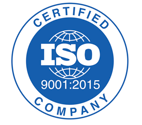The FDA by charter has what appears to be a role with contradictory goals when it comes to medical devices:
- Prevent ineffective and unsafe medical devices from reaching the market
- Create a quick pathway for effective and safe medical devices to reach intended users
It creates public and political pressure from two directions. If it acts too carefully and too slowly, it will stand accused of preventing treatments from reaching patients, often in emergency conditions, by creating too many hurdles. If it acts too rapidly and carelessly, it will stand accused of failing to protect the public health.
For this reason, the FDA regulates medical devices both pre-market and post-market.
”The right balance of premarket and postmarket data collection facilitates timely patient access to important new technology without undermining patient safety. FDA believes this guidance document will improve patient access to safe and effective medical devices that are important to the public health by improving the predictability, consistency, transparency, and efficiency of the premarket review process. This guidance document is intended to support FDA’s efforts to enhance timely availability of devices subject to premarket approval.”
Source:
“Balancing Premarket and Postmarket Data Collection for Devices Subject to Premarket Approval - Guidance for Industry and Food and Drug Administration Staff” https://www.fda.gov/media/88381/download
Given the plethora of Emergency Use Authorizations (EUAs) and the rapid development and emergence of new treatments, it is next to impossible to collect all relevant data prior to market release. There is a clear public need to both allow release of new devices into the market while continuing to gather real-time data on the effects and uses of these devices.
The FDA´s two new draft guidance documents are intended to clarify proper post-market surveillance and reporting as well as making these available to the public. The focus is on Class II (moderate risk) and Class III (high risk) medical devices. The first guidance is intended to provide clear rules and methods for reporting post-market information to the agency which, in turn, allows the agency to post this information to the public in the 522 Postmarket Surveillance Program Database.
The second study provides guidance on post-approval studies. As many stakeholders are involved in a study, from manufacturers, to health care facilities, providers, and patients, this guidance is intended to assist them in gathering and reporting that data and in conducting the studies.
The FDA is continuously evolving and must strive to keep up with so many pressures and issues competing for its attention. These guidance documents provide the agency´s current thinking so that the public and other stakeholders are not left to decipher regulations without clearly understanding the expectations.
Here are 5 of the top impacts of the new FDA Guidances and how these will affect companies:
- Companies marketing certain Class II and Class III medical devices are subject to a 522 Post-Market Surveillance Order. The FDA will issue a PS number (PS#######) to each 522 Order. Upon receiving such an order from the FDA, companies must identify the devices subject to the order and prepare a Post Market Surveillance Plan within 30 calendar days or request a review should it disagree with this order. The plan must include the following, which the guidance describes in further detail:
- PMS objectives that address the surveillance questions
- PMS approach or methodology
- Subject of the study (patient population, etc.)
- Variables and endpoints
- Sample size
- Description of data source
- Description of data collection plan (procedures, data management, quality control)
- Data collection forms
- Patient follow-up plan or schedule
- All data analyses and statistical tests planned
- Investigator´s agreement, if applicable
- Procedures for monitoring conduct and progress
- Content and timing of the PMS Reports
- The FDA will respond within 60 calendar days of receipt of the PMS Plan, identifying any deficiencies in the plan. Manufacturer must then prioritize resolution of any surveillance plan deficiencies. The FDA may issue one of the following letters, to which the manufacturer must respond depending on the letter:
- Not Acceptable Letter
- Approval Letter
- Major Deficiency Letter
- Disapproval Letter
Any changes to the plan must be reviewed and approved by the FDA.
- The second guidance deals with PMA Approval Orders which are a condition of approval. In this case, the manufacturer must submit a Post-Approval Study Protocol which includes the following, which the guidance describes in further detail:
- Background
- Purpose of study
- Study objectives
- Study design
- Study population
- Enrollment and recruitment plan
- Sample size
- Primary and secondary endpoints
- Procedures for adverse events
- Length of follow-up, follow-up schedule, plans to minimize losses to follow-up, and follow-up rate targets
- Description of baseline and follow-up assessments
- Description of data collection procedures
- Data analyses and statistical tests planned
- Data collection forms, informed consent forms, and Institutional Review Board (IRB) approval forms
- Study timelines
Changes to an Approved Post-Approval Study Protocol must be submitted, reviewed, and approved.
- Companies must issue PAS Progress Reports as well as Final Post-Approval Study Status Reports.
- Manufacturers should expect an interactive FDA involvement throughout such studies and must be prepared to address issues accordingly.
Are you interested in learning more?



